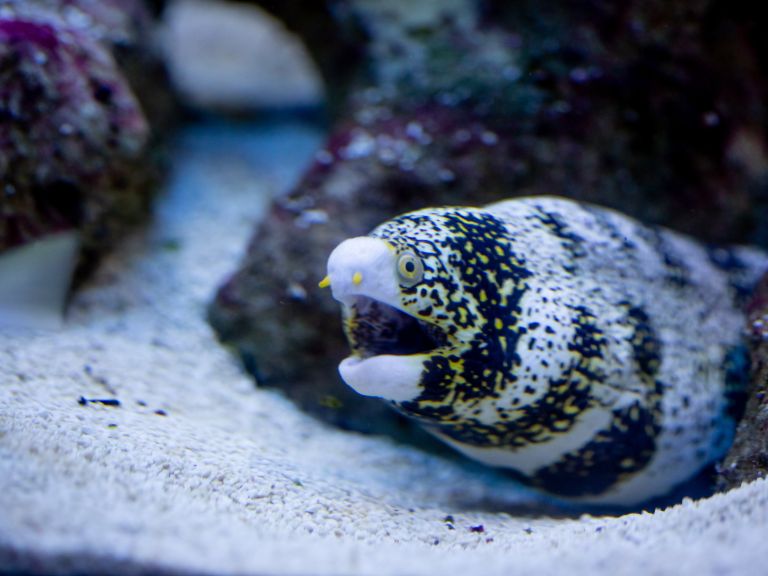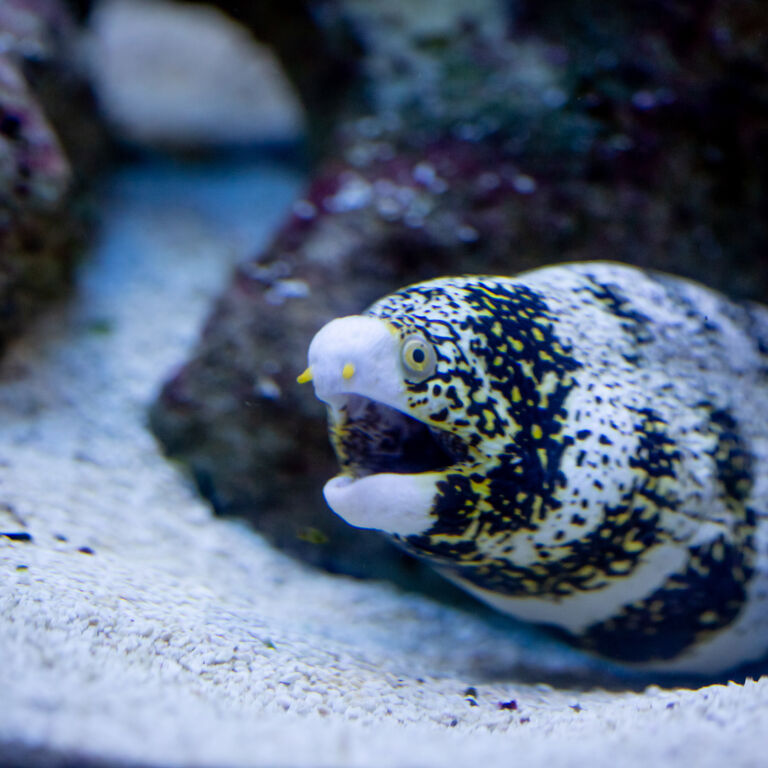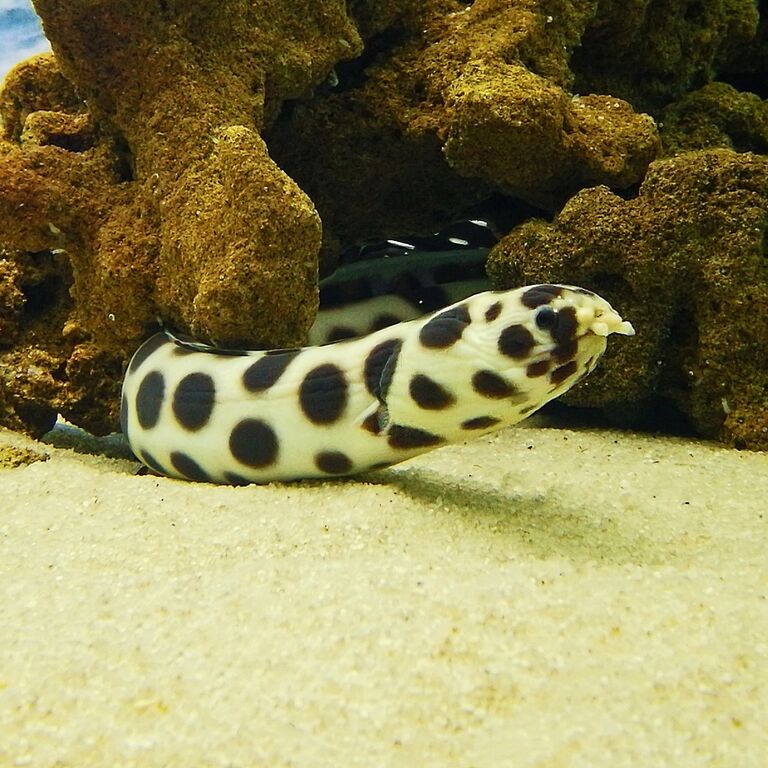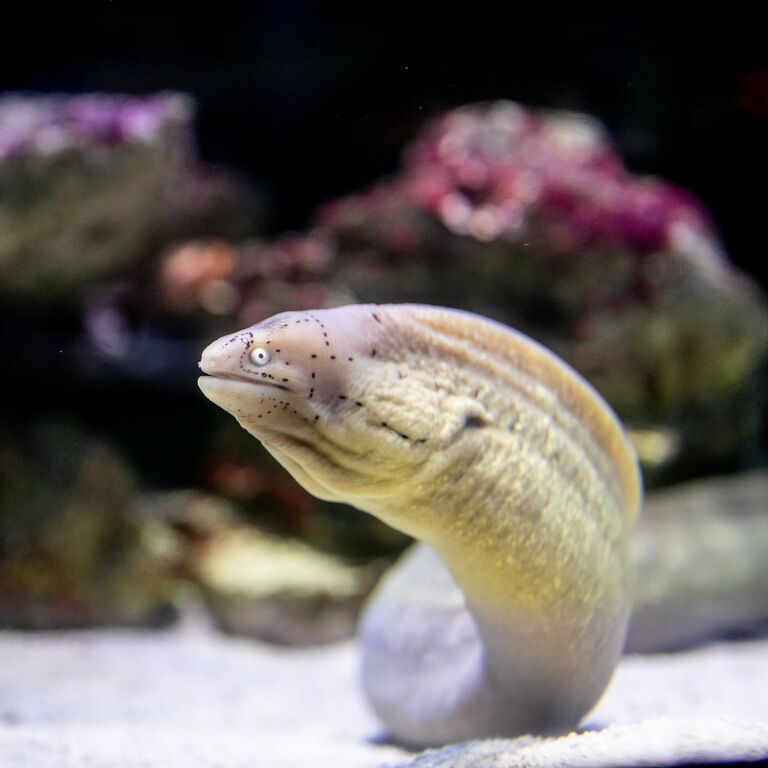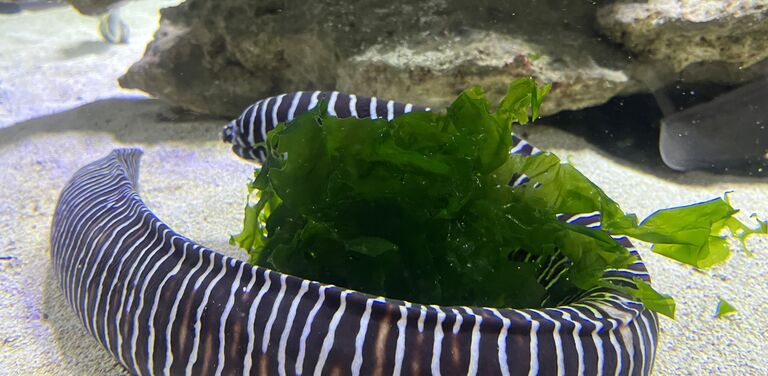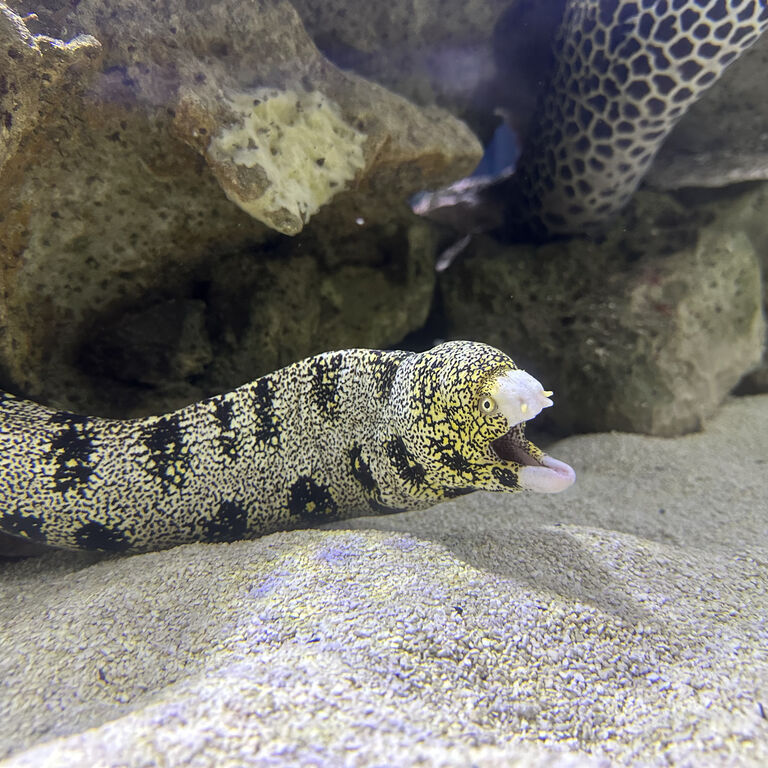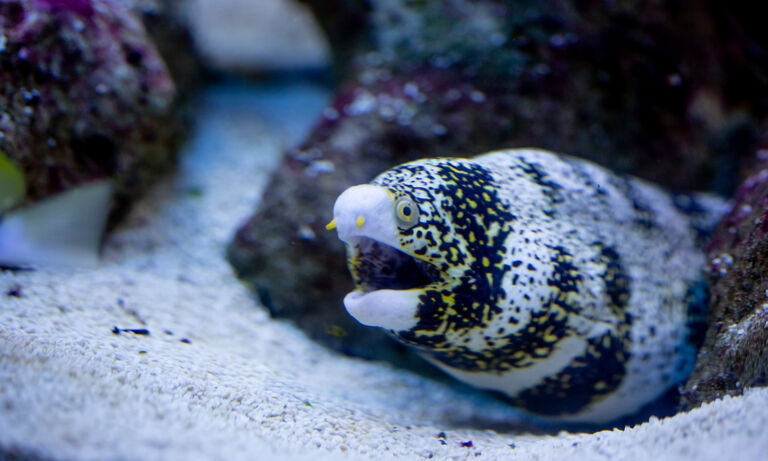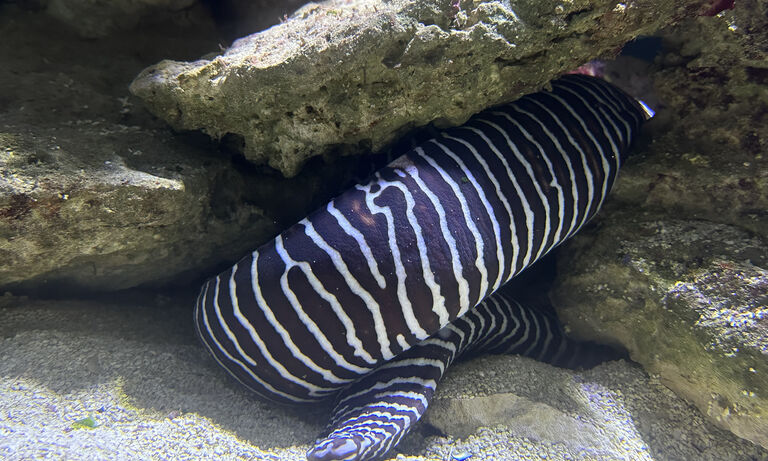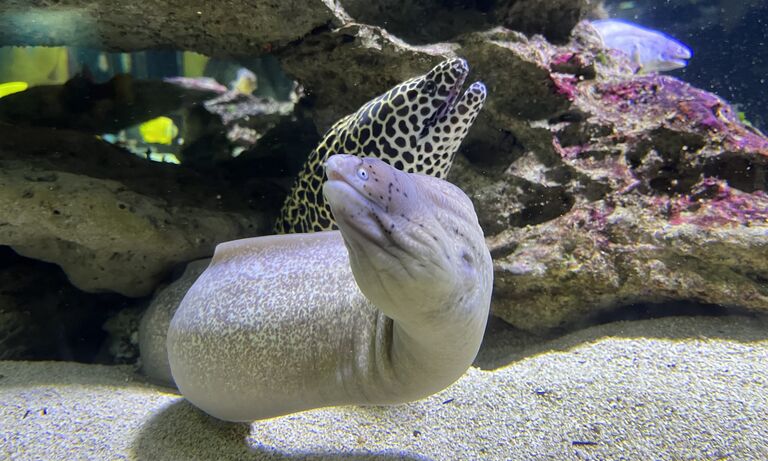
Moray Eels
The moray eel family (Muraenidae) is a big one, consisting of 15 genera and 200 different species found in the world’s marine environments, with only occasional recordings of these animals entering brackish or fresh water. Though consumed in some areas of the world, their flesh can be toxic and could cause illness or death. Ancient Romans used to farm Muraena helena in seaside ponds, as these moray eels were considered a delicacy. Moray eels are vital for the balance of the ecosystem - as the apex predators in their ecosystems, they keep prey species populations under control.
